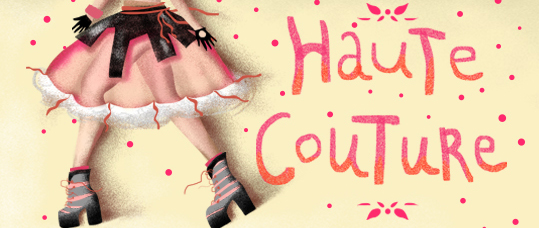In our next episodes we are going to take a closer look at market segments in which fashion companies operate and the evolution of their business models.
Professor Joan Magretta of Harvard Business School defines a business model as a “logical story, explaining who your customers are, what they value, and how you will make economic returns providing them with this value”.
Every fashion product has several components: utilitarian, artistic, aesthetic, emotional, and social.
Today, more than ever before, we can see a switch from utilitarian values to experiential and emotional values along with a growth in price sensitivity.
In the current marketplace, the product itself, and therefore its utility, is not enough. It is rather a mix of parameters, such as the designer's persona or a legend behind the brand, buying experience, visual communication and price point which are key to a product's success.
So, the way a company designs its business is crucial in order to achieve a sustainable competitive advantage.
To understand business models, we firstly need to understand the market segments in which fashion and luxury companies compete. And the most common criterion to define market segments is by price.
This leads us to the “fashion pyramid”, which is the universal industry reference to position a brand. The fashion pyramid identifies five price segments: couture, ready-to-wear, diffusion, bridge and, finally, mass market.
The higher on the pyramid, the higher the price gets. However, at the same time the level of creativity, quality and the customer value proposition are higher.
Let's start at the top of the pyramid, which is represented mainly by fashion designer's companies.
Fashion as an industry started 150 years ago at the high end of the market, when dresses for aristocratic ladies were custom made by several famous tailors.
In 1860, Charles Frederick Worth, a British designer, opened not only a workshop, but a fashion house under his name. It was a groundbreaking innovation. He was also the first to attach a designer label to his dresses. To promote his creations and consult women on clothes and image, he employed live models, which made him the father of the modeling industry as well!
In just a few years he raised the status of a dress-maker to the status of an artist and fashion arbiter, dictating dress styles to both men and women! His office became an important meeting point for affluent customers, and the styles designed by him for princesses and royalty were avidly followed by fashion magazine readers in Europe and the USA. Worth officially became the first couturier.
Up until the 1950's, the fashion industry was concentrated at the top of the pyramid - couture. And even now, designer brands continue working in this segment, even though the potential consumers of this product are a dying breed.
Here you will find exquisite dresses, unique craftsmanship, precious materials and elaborate details with prices that are outrageously expensive. They may go from 20,000 up to 50,000 Euros!
You will wonder: who is buying those expensive dresses?
We have to admit that today there are very few customers that can afford to buy haute couture dresses. What is more, modern life doesn't give a lot of opportunities to participate in occasions worth wearing a piece of art.
However, we still have customers for haute couture. They are mainly representatives of the old aristocracy, and the new rich from emerging economies, such as the United Arab Emirates, Russia and China.
We also have many celebrities that probably don't buy that dress for the red carpet, but receive it as a nice present from the company. And by, doing that, they also promote the brand.
The reason why fashion companies still operate in the haute- couture segment is to sell a dream. In a nutshell, haute couture is a small business, but a very important image builder.
You might not be able to afford a princess dress worn by a celebrity, but you can touch the magic of the designer brand by simply buying lipstick or sunglasses.
This, by the way, explains the booming growth of such market segments as fragrance, make-up and beauty products. You don't need to be an expert to prove this statement. Just pop into any big cosmetics store, especially in festive period, and observe the crowds of women dazzled by creams, lipsticks and perfumes!
Podcast

Прослушало
26
Haute Couture
In our next episodes we are going to take a closer look at market segments in which fashion companies operate and the evolution of their business models.
Voiced by: Gregory Theiner















